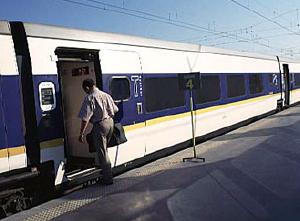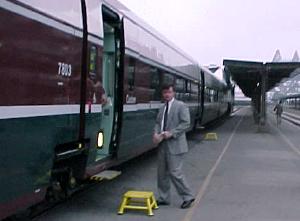The importance of assumptions
- A study finds out, that passenger trains will need 12 hours from Ashland to Eugene.
- A study finds out, that passenger trains will need 4 hours from Ashland to Eugene.
- Both can be right.
"Right" means: "Correctly calculated". The different results are created by different assumptions - about the track, about the train, about the operation, about the stations, about the money needed or available.
"Right" does not mean, that the result of the calculation needs to make any sense. Railfans will grin at the 12 hour figure, because Southern Pacific could do Ashland-Eugene in less than 8 hours with steam locos and heavyweight coaches of the 1920s. But nonetheless, the study can be "right", because a study is right or wrong in relation to the assumptions, that it was based upon.
In this article, assumptions are not only documented for everybody's reality check. Great care has been taken, to review the local situation, look out for best practice in the world of railroading, adapt this best practice to the local situation, and make this an assumption. The author did not care, how things are usually done, but how they are doable within the restrictions of laws, rules, and available technology.
The most simple example for this approach are station platforms. It does not make sense, to describe stop times for Amtrak stepbox procedures. Instead, the platforms need to be changed.


RENFE Talgo, Amtrak Talgo.
As a rule of thumb, the missing platform height increases stop time by a factor of three.
While level boarding would be best, moderately raised platforms will already cut away most of the wasted time. Calculating stop times for raised platforms uses a realistic assumption, because the elimination of stepbox boarding procedures is the cheapest infrastructure upgrade. The price of an infrastructure upgrade is calculated in dollars per minute saved, and a minute is a minute, wether saved by curve easing or by faster boarding.
This approach, assuming that the cheapest upgrades are always done first, has been used in more than one way for this article.